Canned apple slices are incredibly convenient to have on hand to turn into quick pies, cobbers, crumbles, etc.
Some people just like to eat them straight out of the jar!
If you’ve ever wondered how some people produce apple-based desserts out of seemingly nowhere while doing ten other things, having home-canned apple slices is one of their secret tricks they’re not telling you about.
These directions are from the USDA Complete Guide.
Canning apple slices is one of those rare procedures where you have the choice of either water bathing, steam canning, or pressure canning. The pressure canning is not safer: it’s just an equivalent to the water bathing.
Please be sure to see additional info section after the recipe about good varieties of apples for home canning quality-wise.
Quantities of apples needed
Numbers are approximate guidelines.
On average, as a very rough guideline, expect to need about 1 ¼ kg (2 ¾ lbs / 6 large ) of apples per 1 litre (US quart) jar of canned apple slices.
- 8 ½ kg (19 lbs) of apples = 7 litres (US quarts) canned apple slices
- 5 ½ kg (12 ¼ lbs ) of apples = 9 x ½ litres (US pints) canned apple slices
- 1 US bushel apples = 22 kg (48 lbs) = 16 to 19 litres (US quarts) canned apple slices
A ½ litre (1 US pint) jar opened, with contents including any juice tipped into a weigh-scale pan, will weigh around 350 g (¾ lb).
The recipe
Jar size choices: Either half-litre (1 US pint) OR 1 litre (1 US quart)
Processing method: Water bath OR steam canning OR pressure canning
Yield: varies
Headspace: 2 cm (½ inch)
Processing pressure: Only applies if pressure canning. 5 lbs (35 kPa) weighted gauge, 6 lbs (42 kpa) dial gauge (adjust pressure for your altitude when over 300 metres / 1000 feet)
Processing time: Water bath OR steam canning, either size jar, 20 minutes. Pressure canning, either size jar, 8 minutes.
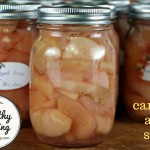
Canning apple slices
Instructions
- Prepare a very large pot or bowl with acidulated water in it (by adding lemon juice or ascorbic acid. This is to prevent the apple going brown.)
- Wash, peel, core and slice the apples.
- As you work, work in such a way that peeled apple never rests for long outside the water, to prevent discolouration.
- Put drained apple slices in a large pot.
- For every 2 kg (5 lbs / 16 cups ) of drained apple slices in the pot, add ½ litre (2 cups / 1 US pint) of water. Bring to a boil, then start timing and let it boil for 5 minutes.
- Pack hot apple slices into half-litre (US pint) jars or 1 litre (US quart) jars.
- Leave 3 cm (1 inch) headspace.
- Top up with the blanching water or if there isn't enough, clean boiling water (such as from a kettle, for instance).
- Leave 2 cm (½ inch) headspace after the filling liquid.
- Debubble, adjust headspace.
- Wipe jar rims.
- Put lids on.
- Process in a water bath or steam canner or pressure canner.
- Water bath / steam canner: either size jar for 20 minutes; increase time as needed for your altitude.
- Pressure canner: either size jar for 8 minutes. 5 lbs (35 kPa) weighted gauge, 6 lbs (42 kpa) dial gauge (adjust pressure for your altitude when over 300 metres / 1000 feet)
Nutrition
Processing guidelines below are for weighted-gauge pressure canners. See also if applicable: Dial-gauge pressures.
| Jar Size | Time | 0 to 300 m (0 - 1000 feet) pressure | Above 300 m (1000 ft) pressure | |
|---|---|---|---|---|
| ½ litre (1 US pint) | 8 mins | 5 lbs | 10 lb | |
| 1 litre (1 US quart) | 8 mins | 5 lbs | 10 lb |
Reference information
How to water bath process.
How to steam can.
When water-bath canning or steam canning, you must adjust the processing time for your altitude.
How to pressure can.
When pressure canning, you must adjust the pressure for your altitude.
What is the shelf life of home canned goods?
Recipe notes
- If you go the pressure canning route, don’t let the pressure go over, or your jars will really vent on you;
- If the apples you are using are more “fresh-eating apples” than “cooking apples”, be careful not to over-blanch them or you will end up with applesauce in the pot;
- It will seem that there is not enough water to blanch the apple slices in, but they will quickly give off a lot of water of their own.;
- No matter how much you debubble the jars, you will still frequently see bubbles in the jar after canning. There is not much you can do about it, so it’s not worth losing sleep over: apple slices are full of air, which is why they float in water. This is one reason it is important to blanch them first: to try to get a lot of that out.
Choosing the right type of apple
Take-away: Among apple varieties that old-hands suggest for holding their shape well after home canning are Fuji, Gala, Honey Crisp, Jonagolds, and Mutsu.
The major types of apple for different types of food preparation are: Cider Apples, Fresh-Eating Apples, Juice Apples, Pie Apples, Salad Apples and Sauce Apples.
There’s also a general category referred to as Cooking Apples.
All types of apple varieties are safe for home canning, but the question arises when it comes to quality of result. When you are home canning apple slices, if you want to end up with clean, distinct slices in your jars you will want to use pie apples. If you use sauce apples, your slices may break down completely into moosh — use them for applesauce instead or another home canning recipe in which apples are boiled down, such as Apple Hot Sauce.
Often you will have apples that are “okay for pie”. This means most slices will stay together relatively well, though a few may break down. These will be less nice for pie, which is served in slices, but okay for cobblers and crumbles, etc., which are served by the scoop.
If your apple slices do break down on you after canning, it was owing to the type of apple. The resulting product is still safe, but when you go to use it, use for another purpose where puréed apple is needed.
According to old-hand canners, some of the apple varieties whose slices hold their shape well after home canning include Fuji, Gala, Honey Crisp, Jonagolds, and Mutsu. There are almost certainly others we have not heard of yet. But of course such a “quality of shape” pronouncement is entirely a personal preference and judgement, and ultimately up to you.
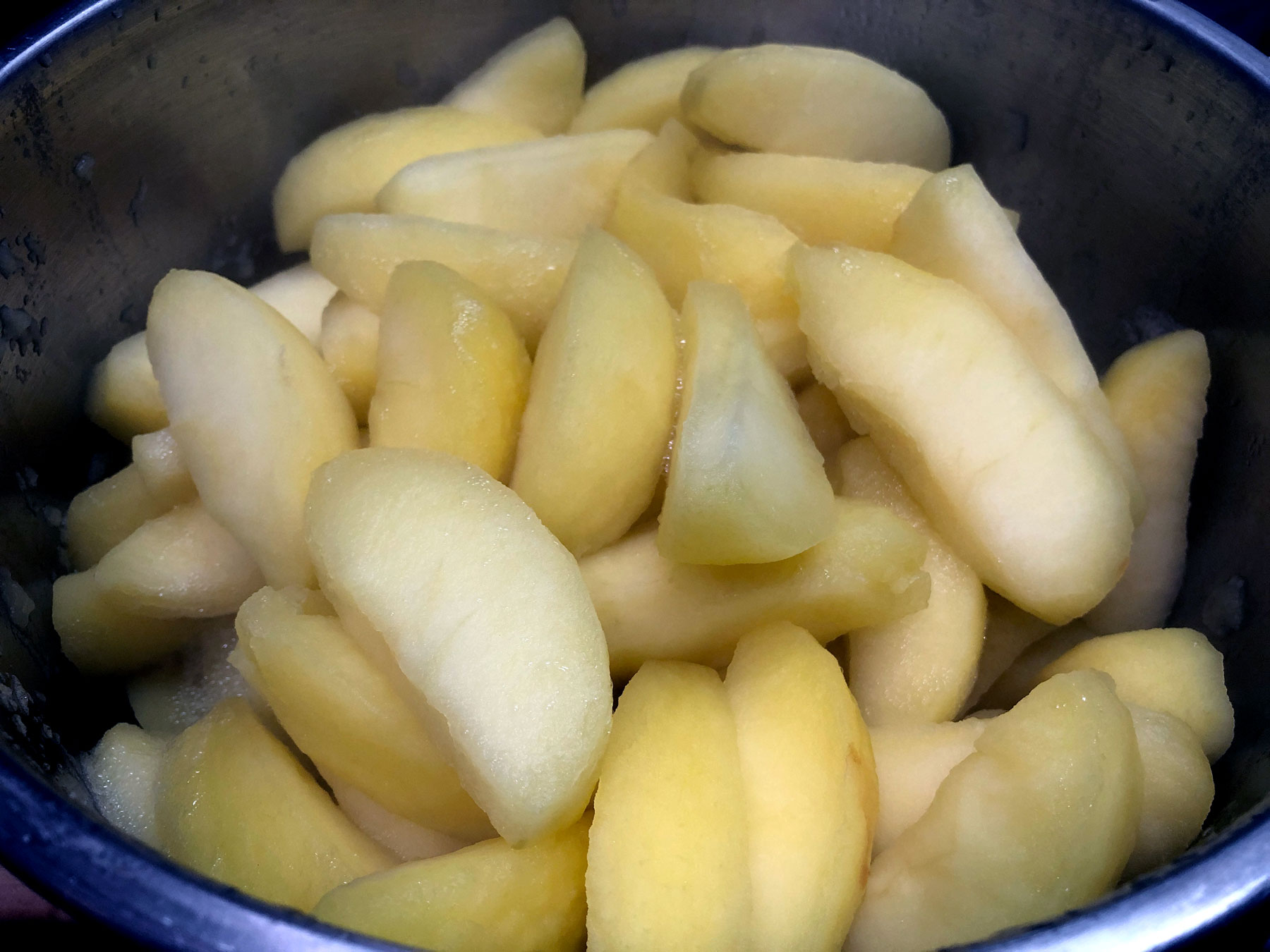
Mutsu (aka Crispin) apples after 5 minutes blanching in boiling water. Shape has held well. They are a reliably good choice for quality results when home canning apple slices. ©HealthyCanning / 2021

Spy apples, left. The Mutsu on the right have done a better job of holding a distinct shape. ©HealthyCanning / 2021
Canning apple slices raw pack
Google will certainly find you some bloggers saying that they “canned apple slices raw pack, and here’s how” (with the inevitable life-story directions too, no doubt.) But then the quality of bloggers’ food, cooking and canning advice overall is… shall we say.. uneven. It’s probably rare for a food blogger to come back and delete a recipe page, even if they’ve later decided the advice is bad, if that page is making ad money for them!
But then if you scroll a little further in the Google search results, you hear from old hands saying that the results of attempting a raw pack deliver bad results and do not fare well on the shelves in even short storage. (And who wants that, after all that work, plus expense if you’ve bought the apples).
Utah State Extension Service says they won’t even bother giving raw pack directions, as the results are just so bad, though they phrase it politely:
“Raw pack canning yields poor quality product; therefore instructions are for hot pack only.” [1]Brennard, Charlotte and Kathleen Riggs. How to Preserve Apples. 30 June 2020. Accessed October 2021 at https://extension.usu.edu/preserve-the-harvest/research/apples
So, that’s why there are no lab-tested directions from credentialled sources for raw-pack canning of apple slices. The resultant quality is so bad — and who can blame them for not wanting the hassle of dealing with the inevitable consumer complaints!
Recipe Source
This recipe comes from the USDA Complete Guide (2015).
- Apples – Sliced. In: United States Department of Agriculture (USDA). Complete guide to home canning. Agriculture information bulletin No. 539. 2015. Page 2-7.
Modifications made:
- None.
Nutrition
Serving size: 125 g, drained (about one quarter of a ½ litre / US pint jar, if 500 g went into the jar.)
Per 125 g:
- 74 calories, 0 mg sodium
- Weight Watchers PointsPlus®: 2 points (while raw apple slices are free on Weight Watchers, processed apple slices probably aren’t).
* Nutrition info provided by https://caloriecount.about.com
* PointsPlus™ calculated by healthycanning.com. Not endorsed by Weight Watchers® International, Inc, which is the owner of the PointsPlus® registered trademark.
Cooking from canning recipes
Apple cobbler with biscuit topping
TIP! For fruitier pies, add a jar of home-canned apple slices to a jar of Canned Apple Pie Filling when making a pie.
Further reading
Linda J Harris. Apples: Safe Methods to Store, Preserve, and Enjoy. University of California, Division of Agriculture and Natural Resources. Publication 8229. 2007.
References


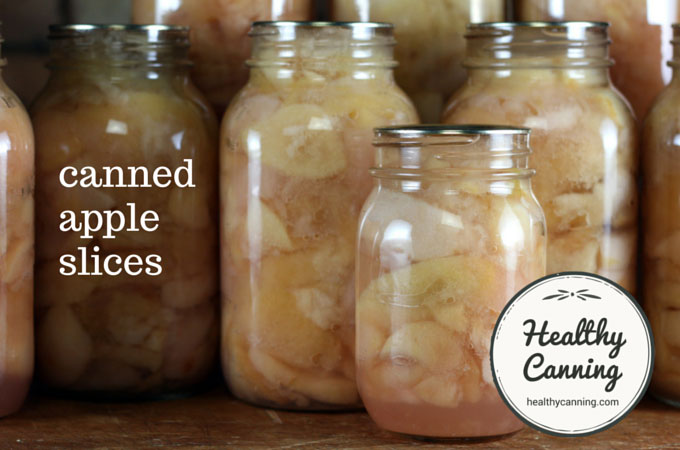
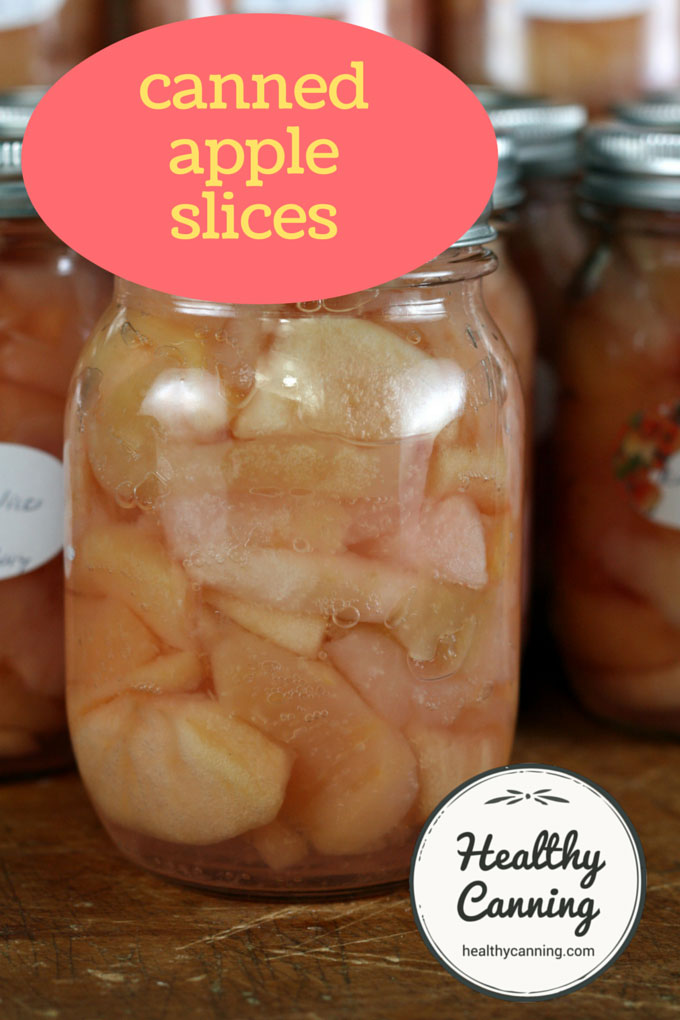
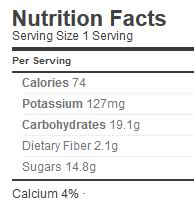
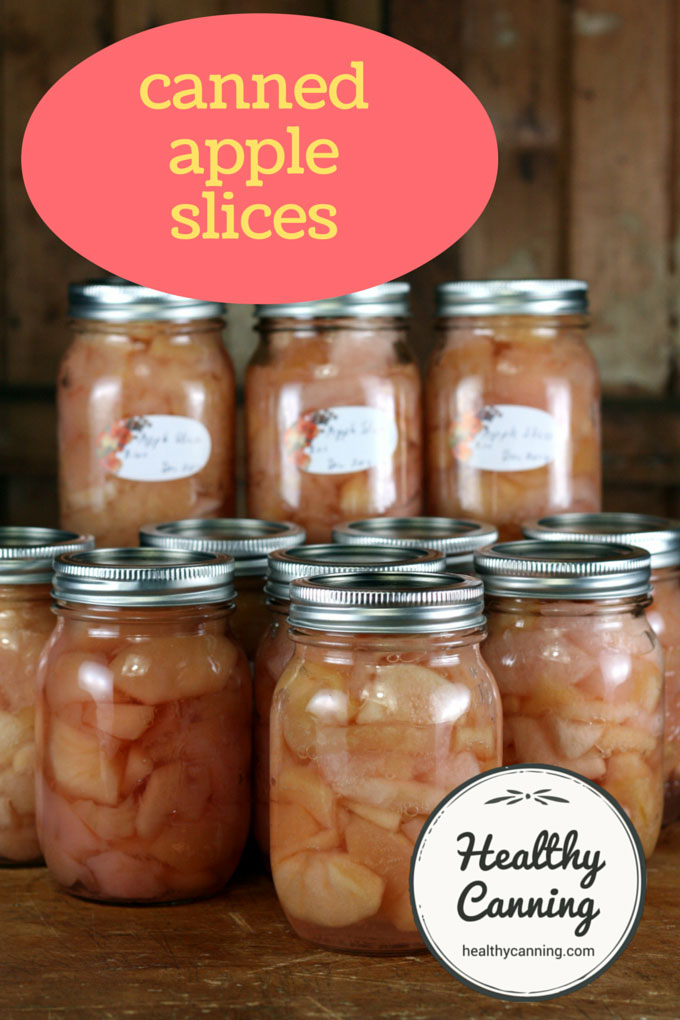
Luisa
Hi! Any chance you could sdvise whether it would be safe to add seasonings to the juice/light syrup for this? I’d make apple pie filling, but I haven’t been able to find clear jel this year and my apples will get soft by the time it arrives if shipped. I’ve been hunting for a spiced apple slices recipe but they all seem to be based on the old USDA spiced apple rings recipe with HUGE amounts of sugar, that even USDA says it was planning to revise to a lower sugar version. I would appreciate any suggestions you might have!
Joann
I was wondering the same thing. What did you finely do?
Naomi
Water bath v pressure canning this one; would I expect any difference in texture after processing? (Received a pressure canner for christmas and yet to try it out!). Cheers.
Talya
Hello, I’m confused about the safety of this. Every recipe I’ve ever used for canning fruit requires lemon juice to make it acidic enough to safely store. Why is lemon juice not required for this? Thank you.
Healthy Canning
“Every recipe I’ve ever used for canning fruit requires lemon juice to make it acidic enough to safely store.” Now we’re confused, because aside from lower-acid fruits such as Asian Pears, figs and white peaches, almost all fruits are fine to can on their own without any added acid.
Linda Irwin
After I finished processing my apples in the water bath canner some of the jars were floating in the water. The jars have lost liquid and seem to have a lot of air. I did remove bubbles before processing but evidently not enough. The jars are sealed but are they still good to eat?
Julie
I have just attempted to hot pack apple slices. I put the slices into boiling syrup but before I got the syrup back to boil the apples turned to mush so I water bathed the apple as purée.
If I try again do I need to get the syrup boiling again? Could I just let the apples heat through the put in jars? Or should I try raw pack?
Healthy Canning
Use a different variety that holds its shape better in cooking. Pie apples, for instance. https://www.cooksinfo.com/pie-apples
julie
Hi, thanks for your reply. I am using pue apples. Do you have any further advice – I have boxes of them.
Healthy Canning
If you have pie apples, you are good to go. Your only decision then is whether to can with sweetener, or plain. Some people feel that plain is more flexible, because that way sugar added to the jars won’t conflict with sugar called for in recipes you might use them in. The downside with canning unsweetened is that after a year or so, you may see some darkening happening sooner than those canned with sugar, esp. if the jars are stored where light can reach them.
John bonomo
Try granny Smith’s, gala, fugi, these are good pie apples and gold their shape better
Melissa
Everything I’ve read says raw pack doesn’t give good results. Maybe just branching them for one minute? Sorry I can’t be more of a help.
Helen Hart
Can I use apple juice instead of water to preserve the apples
Healthy Canning
That would be fine. Though just to be clear, it wouldn’t preserve them any more than water.
Llayla
I have scoured the internet looking specificly for pie recipes using sliced canned apples to no avail. Here you are stating that you can make a pie, but there is only a link to apple cobbler and apple crumb. I don’t want to make apple pie filling, I want to can sliced apples, then later use some of them for a pie. Is this possible or would it be too mushy? If it would work, do you have a link to a pie recipe using these specific apple in the above text?
Thanks!
Healthy Canning
Good point. I’ll add apple pie to the list of “cooking with canning” recipes to post.
Venna Davidson
I can my apples for use mostly in pies. The recipe I use is in a Betty Crocker cookbook for pies. You might check there and it might be for fresh apples but the recipe is the same either way. I just goggled Betty Crocker apple pie and it came up but it does say fresh apples just like my recipe but I use my bottled ones.
Healthy Canning
What do you do to your bottled slices? Do you dump them into the pie, water and all, or do you drain them?
Maria
Can you please tell me what is the shelf life of these canned apples? Thank uou
Healthy Canning
Shelf life: https://www.healthycanning.com/the-shelf-life-of-home-canned-goods/
Maria
Thank you for your speedy response!
Lee
How long can you keep them stored
Healthy Canning
How long can you store home-canned goods.
Emily
Do you not sugar to apples for canning
Healthy Canning
There is no need to. However if you wish you may can them in a sugar syrup. https://nchfp.uga.edu/how/can_02/syrups.html
Sue Osborne
I need recipes that are based on using canned apple slices–NOT apple pie filling. Can you provide some or direct me to some sites that use canned apple slices–NOT apple pie filling. Thanks for your help.
Healthy Canning
Directions for canning apple slices are above.
Sarah
Can I keep the peels on?
Healthy Canning
Most of the bacterial load is on the exterior of the apples, embedded in the peel. They would need to re-test the processing times to see if the existing times were adequate to deal with the increased bacterial load of leaving the peel on, or, if the times needed to be longer. So, in short, if you do leave the peels on, you’re on your own: the quality / safety assurances from the USDA don’t apply. For more info on peeling, see: https://www.healthycanning.com/why-you-have-to-peel-some-vegetables-for-home-canning/
Darrell Fluman
The article you reference for your answer discusses the need to peel root vegetables, not fruit. There is no part of the article that talks about the necessity of peeling apples, peaches, nectarines, etc…
Healthy Canning
Good point. Added that to todo list. Thanks.
Kristin
I did this recipe and my apples absorbed all the liquid in about 2-3 weeks. I have like 3 inches left at the bottom. They are not changing color so are they still ok to eat? The Jars are all sealed yet but I am just not sure what went wrong or if this is normal??
Healthy Canning
How much water gets absorbed will depend on the variety of apple, but that is normal for many varieties. If you followed the USDA Guide directions, you will be fine. I’ve had a few jars that ended up nearly solid after processing, owing to jar venting or apple slices swelling and pushing water out during processing. The key thing is that we followed directions in preparing the jars, and then in processing. If you wanted to discuss the matter more, try one of these Master Food Preserver groups: https://www.healthycanning.com/master-food-preserver-help-groups/
Slass
Is it safe to can any leftover syrups from this if canned in a heavy syrup per nchfp recipe? what if lemon is added?
Healthy Canning
Just freeze any leftover syrups.